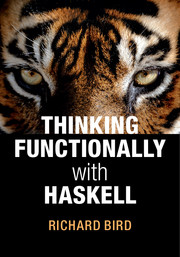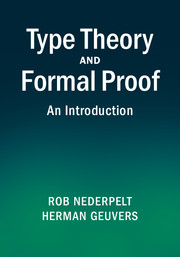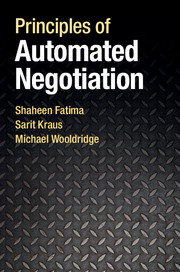Refine search
Actions for selected content:
48284 results in Computer Science

Thinking Functionally with Haskell
-
- Published online:
- 05 November 2014
- Print publication:
- 09 October 2014

Type Theory and Formal Proof
- An Introduction
-
- Published online:
- 05 November 2014
- Print publication:
- 06 November 2014

Principles of Automated Negotiation
-
- Published online:
- 05 November 2014
- Print publication:
- 13 November 2014
A classification of all 1-Salem graphs
- Part of
-
- Journal:
- LMS Journal of Computation and Mathematics / Volume 17 / Issue 1 / 2014
- Published online by Cambridge University Press:
- 01 November 2014, pp. 582-594
-
- Article
-
- You have access
- Export citation
SCESS: a WFSA-based automated simplified chinese essay scoring system with incremental latent semantic analysis
-
- Journal:
- Natural Language Engineering / Volume 22 / Issue 2 / March 2016
- Published online by Cambridge University Press:
- 30 October 2014, pp. 291-319
-
- Article
- Export citation
XML clustering: a review of structural approaches
-
- Journal:
- The Knowledge Engineering Review / Volume 30 / Issue 3 / May 2015
- Published online by Cambridge University Press:
- 29 October 2014, pp. 297-323
-
- Article
- Export citation
A Gentle Guide to Constraint Logic Programming via ECLiPSe by Antoni Niederliński , xiii + 509 pages, published by Jacek Skalmierski Computer Studio, Third Edition, 2014.
-
- Journal:
- Theory and Practice of Logic Programming / Volume 15 / Issue 1 / January 2015
- Published online by Cambridge University Press:
- 29 October 2014, pp. 143-144
-
- Article
- Export citation
An Extension of the Hajnal–Szemerédi Theorem to Directed Graphs
-
- Journal:
- Combinatorics, Probability and Computing / Volume 24 / Issue 5 / September 2015
- Published online by Cambridge University Press:
- 28 October 2014, pp. 754-773
-
- Article
- Export citation
TLP volume 14 issue 6 Cover and Back matter
-
- Journal:
- Theory and Practice of Logic Programming / Volume 14 / Issue 6 / November 2014
- Published online by Cambridge University Press:
- 21 October 2014, pp. b1-b2
-
- Article
-
- You have access
- Export citation
Query Complexity of Sampling and Small Geometric Partitions
-
- Journal:
- Combinatorics, Probability and Computing / Volume 24 / Issue 5 / September 2015
- Published online by Cambridge University Press:
- 21 October 2014, pp. 733-753
-
- Article
- Export citation
TLP volume 14 issue 6 Cover and Front matter
-
- Journal:
- Theory and Practice of Logic Programming / Volume 14 / Issue 6 / November 2014
- Published online by Cambridge University Press:
- 21 October 2014, pp. f1-f2
-
- Article
-
- You have access
- Export citation
Sperner's Problem for G-Independent Families
-
- Journal:
- Combinatorics, Probability and Computing / Volume 24 / Issue 3 / May 2015
- Published online by Cambridge University Press:
- 15 October 2014, pp. 528-550
-
- Article
- Export citation
(Un/Semi-)supervised SMS text message SPAM detection
-
- Journal:
- Natural Language Engineering / Volume 21 / Issue 4 / August 2015
- Published online by Cambridge University Press:
- 15 October 2014, pp. 553-567
-
- Article
- Export citation



















